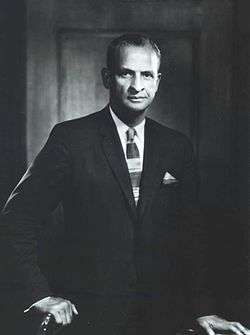Earl W. Renfroe

Earl Wiley Renfroe (January 9, 1907 – November 14, 2000) was a history-maker in the field of orthodontics and in breaking down the barriers of racism.
Dr. Renfroe taught at the University of Illinois at Chicago College of Dentistry from 1933 through the 1980s. For many years, he was acknowledged as one of the best hands-on clinical orthodontics instructors in the world.
With fellow faculty member Dr. Thomas K. Barber of the College's Department of Pediatric Dentistry, Dr. Renfroe in 1957 wrote a seminal article on the concepts of preventive and interceptive orthodontics. Dr. Renfroe also is considered one of the "fathers of orthodontics" in Brazil.
Breaking down barriers for African Americans
In 1966, his being named head of the Department of Orthodontics made him the first African American to lead a department at the University of Illinois at Chicago College of Dentistry.
He was the first African American orthodontist to open an office in the Chicago downtown Loop area, and the first African American in Illinois to be licensed as a commercial aviator.
Early years
Born in Chicago January 9, 1907, Earl Renfroe graduated from Austin O. Sexton Grammar School in 1921 and also from Bowen High School (Chicago) in 1925. At Bowen, he became the first African American in the school's history to attain the rank of Cadet Commander in the Reserve Officers Training Corps.
Renfroe became the first student at the University of Illinois at Chicago College of Dentistry to work outside the College full-time while carrying a full course load. He graduated first in his class of 1927.
In 1932, he joined the Illinois National Guard, and eventually was awarded the rank of general in 1984. In 1934 he became the first African American in Illinois, and only the third in the nation, to obtain a commercial pilot's license. He later served as an inspector for the Illinois Aeronautics Commission.
Breakthroughs in dentistry
Once on the UIC College of Dentistry faculty, he ended the practice of students being allowed to provide dental care only for the patients of the same race as themselves.
Dr. Renfroe served as chief of the United States Army Dental Service in Fort Huachuca, AZ.
In 1950, Dr. Renfroe opened an office downtown in Chicago's "Loop" (downtown area), becoming not only the first African American orthodontist in the Loop, but the only African American professional in any field to have an office in Chicago's downtown at that time.
International impact
In the late 1950s, Dr. Renfroe began traveling abroad to lecture on orthodontics. He eventually taught in nine countries including Brazil, and was the first U.S. dentist to be invited back to Brazil, where he is considered one of "the fathers of orthodontics," seven times. Upon being invited to Brazil the first time, he learned Portuguese so he could teach the course in the Brazilian dentists' native language.
Dr. Renfroe also made 30 trips to Barbados, where a dental facility now is named for him.
Important textbooks
In 1960, his landmark textbook, Technique Training in Orthodontics, was published By Edwards Bros. Inc., Ann Armor, MI. The Brazilian army made the book required reading for its dentists in 1964.
Honors and interests
In 1988, he was honored with the Distinguished Alumnus Award by the UIC Dental Alumni Association, and two years later was inducted into the Chicago Senior Citizens Hall of Fame.
His wide range of interests, flying, amateur radio operation, pistol and rifle marksmanship, model locomotives, and SCUBA diving—saw him active in over a dozen civic organizations.
Renfroe was a member of Alpha Phi Alpha fraternity.[1]
Renfroe was married to the former Hilda Forte, who died September 13, 2000. His sons are Earl Renfroe Jr. and Stephen Renfroe, and his daughter is Diane Renfroe.
Dr. Renfroe is buried at Arlington National Cemetery, Arlington, VA.
References
- Bike, William S. "Essays on Earl Renfroe" . UIC College of Dentistry Press, 2001.
- Janega, James. Chicago Tribune. "Dr. Earl Renfroe Sr., 93, Pioneering Orthodontist." .